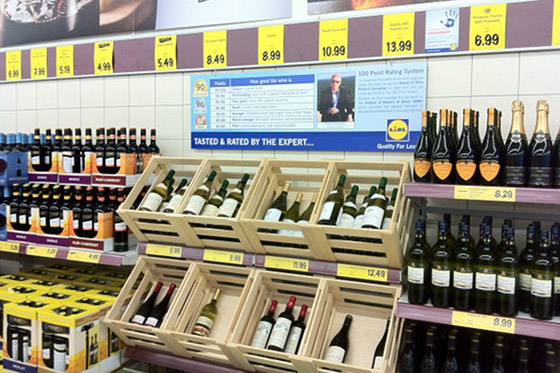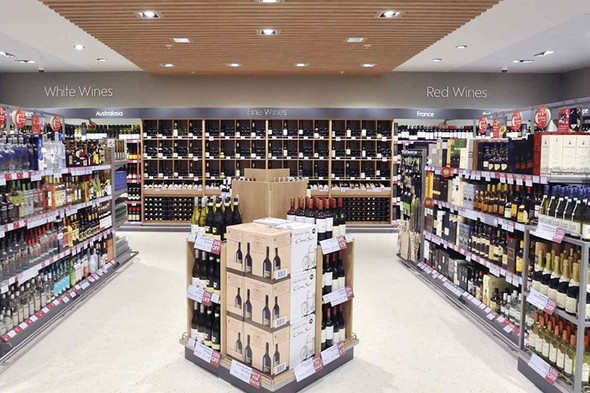Living in the UK and enjoying reading about CEE wines here on WineSofa, then perhaps you have a dilemma. Where on earth can you get hold of wines from the countries we’ve been telling you about? This question intrigued me, having been spending more time in the UK this year and finding, as expected, the shelves dominated by French, Italian, Spanish and new world wines and somewhat devoid of wines from anywhere else.
Beginning with the supermarkets, I wasn’t expecting much, knowing that most of the large chains had been culling their wine lists in the last year or so, and quite frankly removing anything of any real interest, but I nevertheless trawled gamely through their online shopping portals in search of anything Hungarian, Austrian, Romanian or Bulgarian, perhaps the most likely candidates of all the countries to be stocked by the big chains. Tesco carry an Aszú, some own brand international varietals and an own brand Slovenian Sauvignon Furmint, Sainsburys’ house Pinot Gris is produced in Hungary, they have a Pinot Grigio and Zindafel from Romania, and Austria provides a Riesling and Grüner for their Taste the Difference range, Morrisons’ section ‘UK & Rest of Europe’ turned up just six wines, two of which were from Bulgaria and one from Romania, whereas Asda perhaps had the most diverse selection of these four key supermarkets with some international varieties from both Hungary and Romania and some local CEE varieties in their World Atlas Series – Furmint, Fetească Neagră and Feteasca Regală, produced by the same producers as the international varieties, Hilltop and Recas respectively.
Moving upmarket to Waitrose and Marks & Spencer, I was hoping for better things. Would I be disappointed? Waitrose Cellar turned up wines from Hungary, Romania, Bulgaria, Georgia and Macedonia, including a Saperavi and a Vranec blend. Could things be looking up? M&S performed similarly well, with a few wines from Hungary (including a Tokaji Furmint), Bulgaria and Romania, but also a Grüner from Austria, a Slovenian white blend and three Georgian wines, including two Qvevri wines.
While I was talking to a friend last week, she told me that she had picked up a bottle of Tibor Gál’s Pinot Noir in Lidl of all places, and I realised I had neglected to take the discounters Aldi and Lidl into account. Interestingly, both deep discounters are garnering an increasingly good reputation for their wine selection, so I was curious what they would have on offer. Both outshone the standard UK chains. Lidl was offering, in its Christmas wine selection at least, a sweet Szamorodni, a 5 putt Aszú, Tibor Gál’s Pinot Noir and Bikavér and a medium-sweet sparkling Tokaji, whereas Aldi had a Grüner from the Wachau, a dry Tokaji Furmint, an Aszú, a Romanian Fetească Neagră and Shiraz. Perhaps not a greater number than the supermarkets, but at least showing some kind of local typicity.

So, what can be concluded from this? Well, the supermarkets, with the exception of Waitrose, M&S and the deep discounters, have dumbed down their ranges recently and are generally offering economically priced, gluggable wines, mostly based on familiar international varieties, which could in fact come from anywhere. Often it is not entirely clear where they are from initially, as they are sold by their varietal name, e.g. Surprisingly Good Pinot Noir, rather than their origin, in this case Romania, and often in the form of a supermarket buyer’s brand. Interestingly, Bulgaria, which was a huge supplier to UK supermarkets in the eighties, was less present than Romania and Hungary. However, for consumers who are looking for entry-level, everyday wines, discovering that these wines come from Hungary or Romania, for example, is a good introduction to the fact these are wine-producing countries, which many people are not aware of. This knowledge may encourage them to take the next step and try something more unusual from these countries, i.e. a less well-known indigenous varietal like Furmint or Fetească Neagră, offered in ranges such as Sainsburys’ Taste the Difference or Asda’s World Atlas series.
Given that you need huge volumes in order to supply the supermarkets, the above is no real surprise, only the big guys can compete on this playing field, in terms of volume and economies of scale. And although there are huge producers in Hungary, Romania and Bulgaria, such as Hilltop or Törley, Recas and Domaine Boyar, many of the producers are small, family wineries and simply can’t churn out the volumes at such low prices. Nor is it a surprise that international varieties dominate, this is what the average supermarket consumer is looking for in their everyday wine – an easy-drinking, recognisable ‘brand’, i.e. a varietal they’ve heard of, such as Pinot Gris, Chardonnay, Merlot or Cabernet Sauvignon.
The question is, though, will I have any more luck with the independent wine merchants and specialist importers, where the more discerning, curious consumer is in search of something ‘local’ and more unusual? Have the Central and Eastern Europeans managed to break into this market and show wine geeks what they have to offer? We’ll find out in the next instalment!






